At a foot shrine in Tokushima, o waraji (giant rope sandals) hang on each side of the entryway.
W
alk in a way that the footprint you leave is peace and serenity on the earth.
– Thich Nhat Hanh

Traditionally, waraji or Japanese rope sandals were donated to temples as offerings for healthy feet and protection on journeys.
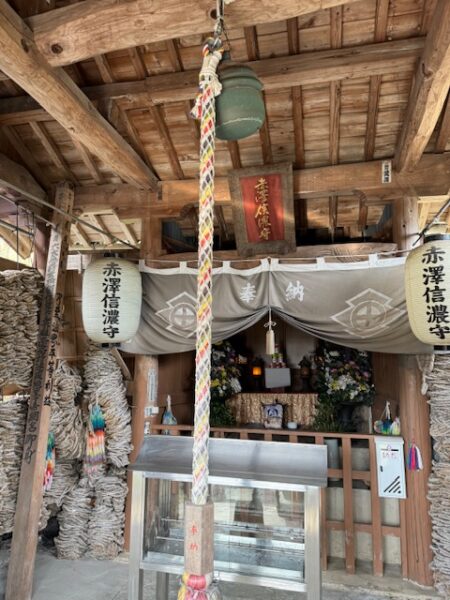
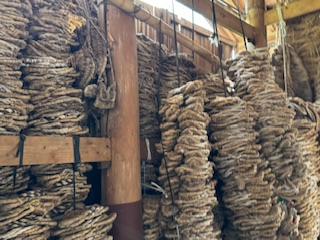
Now, giant waraji (‘o-waraji’) kept in temples are touched by visitors as they pass by. They are regarded as talismans of strength and endurance for walking throughout Japan, especially on the pilgrimage.
Walk with me.
👣
49 Jodo-ji
The Temple of the Pure Land
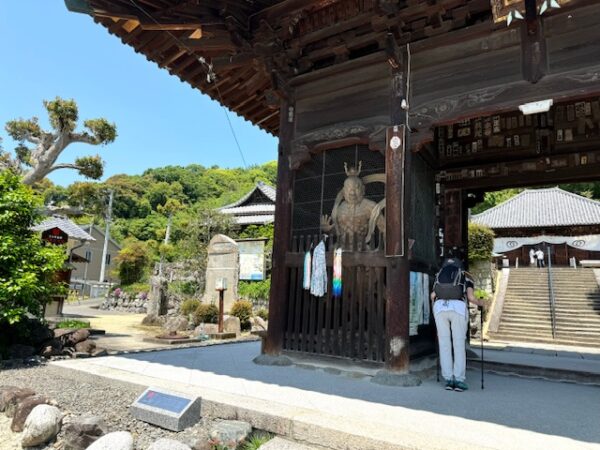
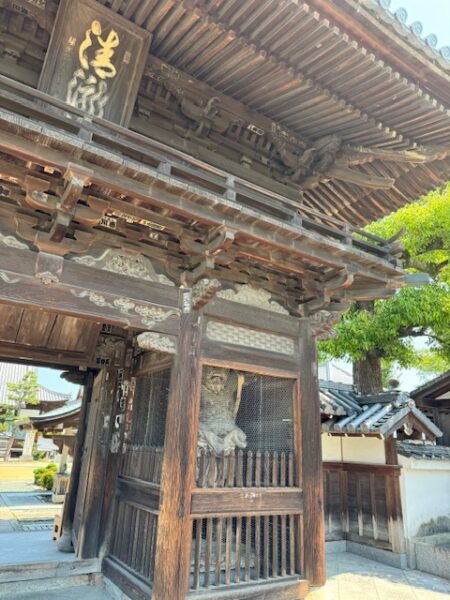
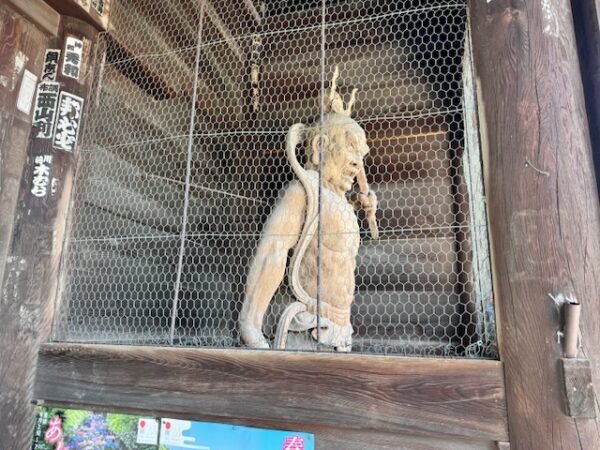
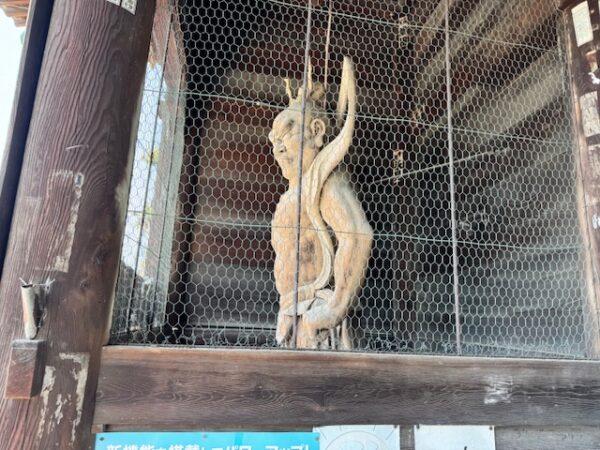
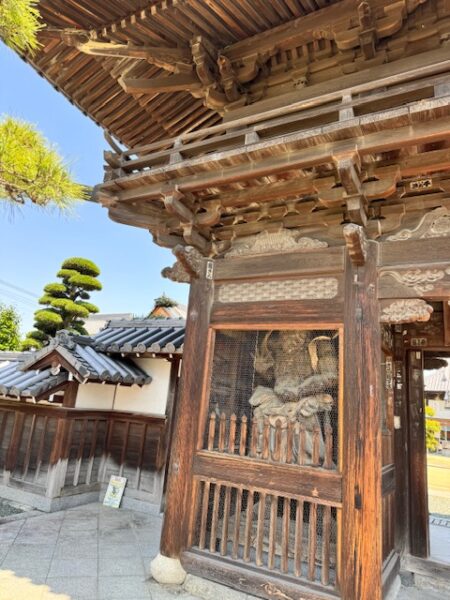
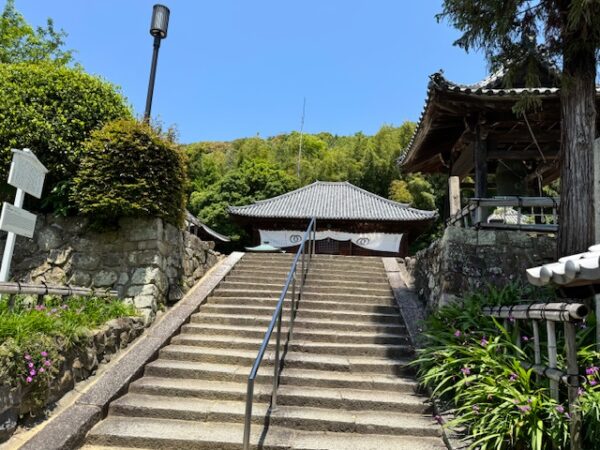
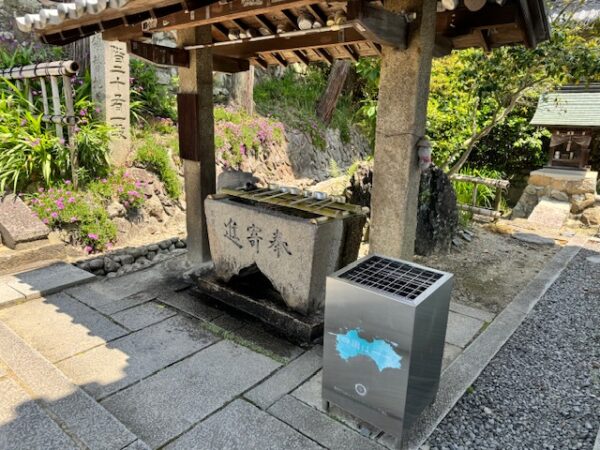
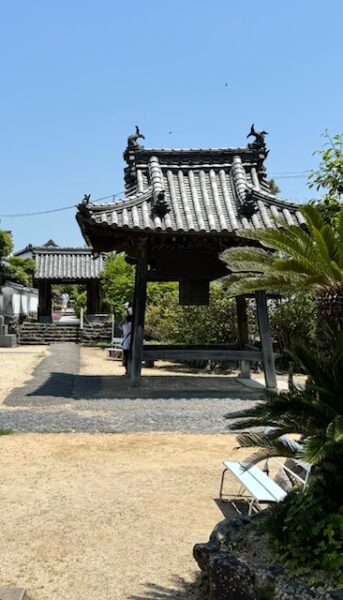
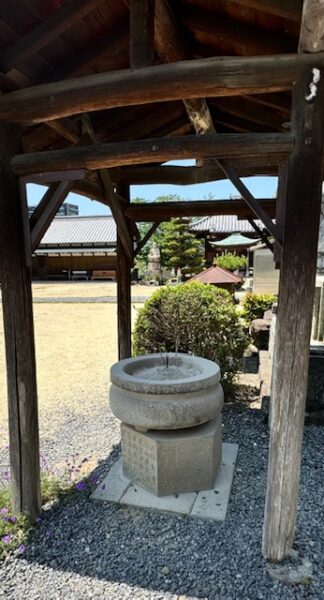
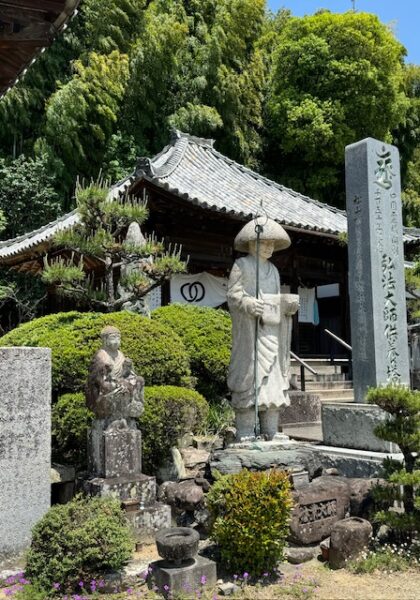
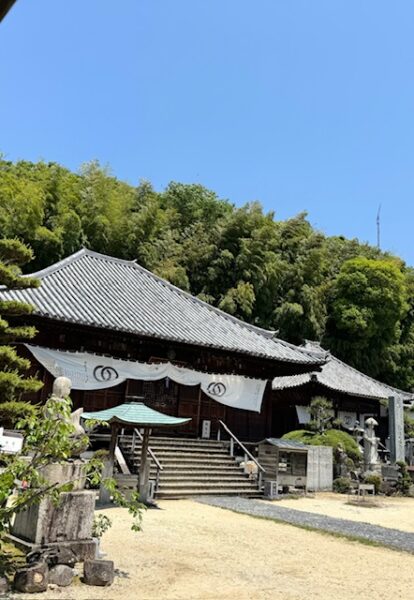
The main temple.
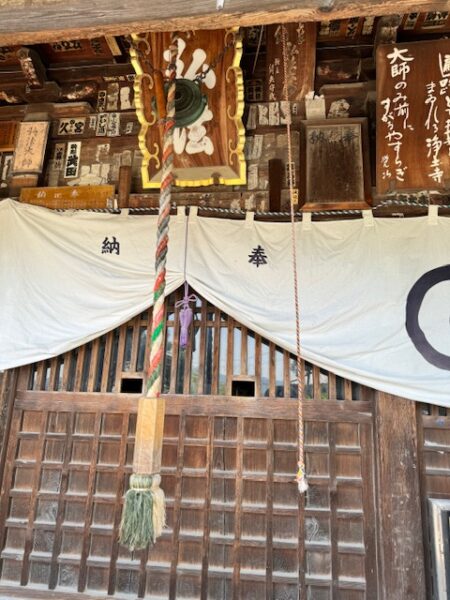
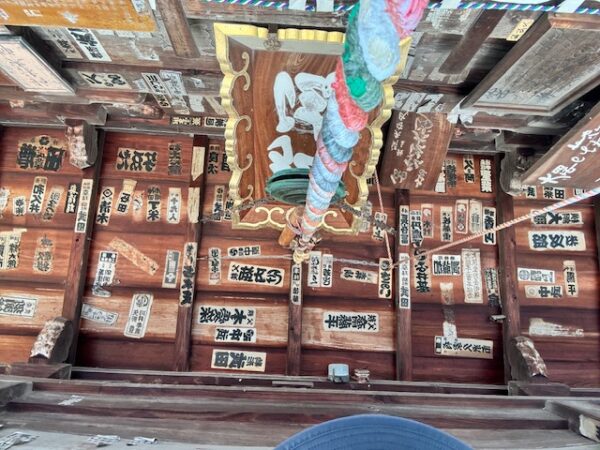
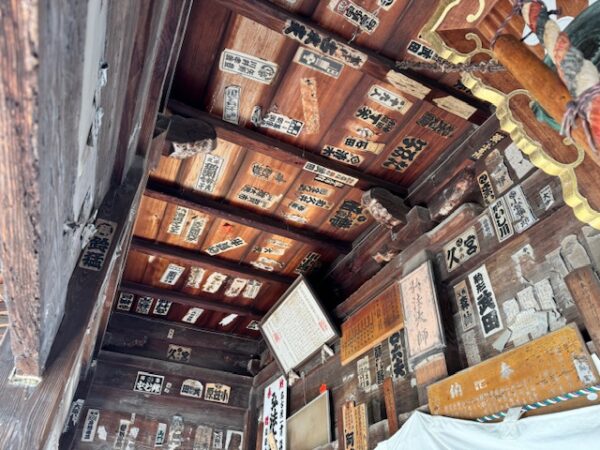
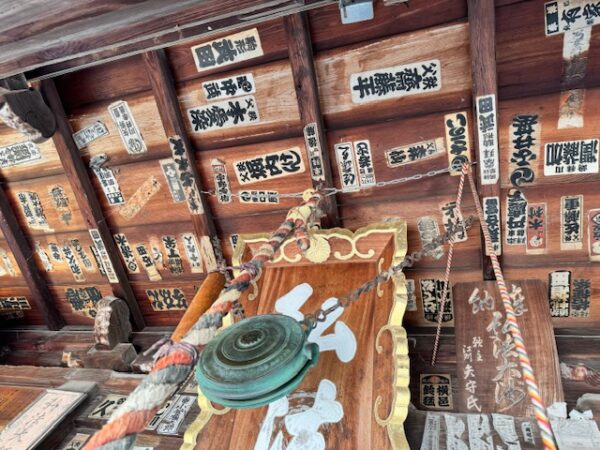
Buddha’s feet appear at a lot of temples.
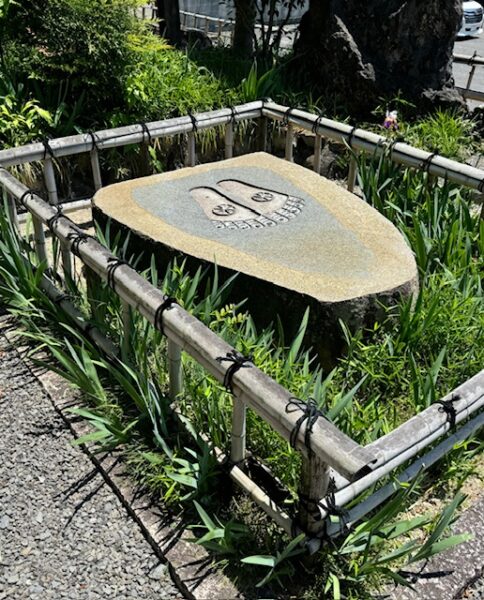
Here is one on a large stone slab.
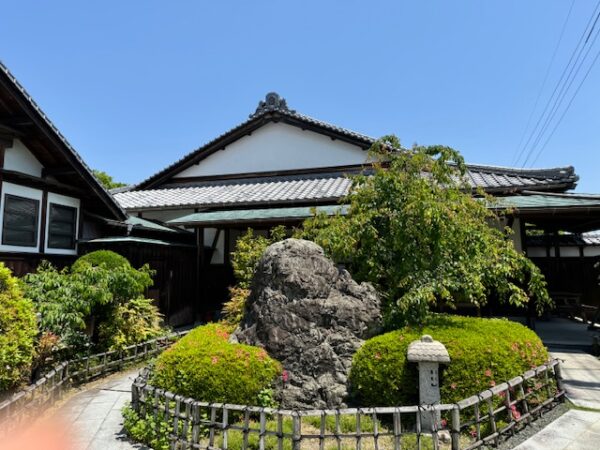
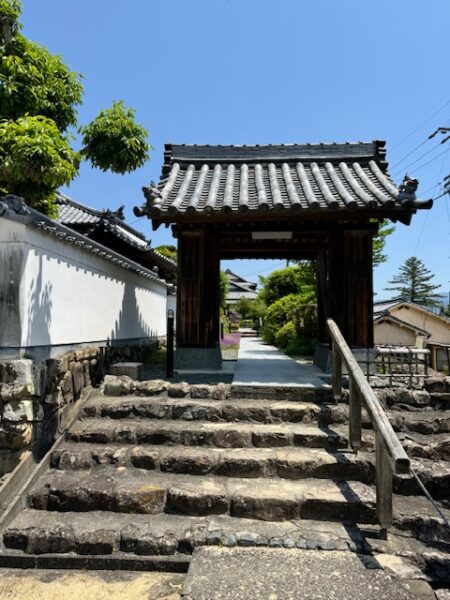
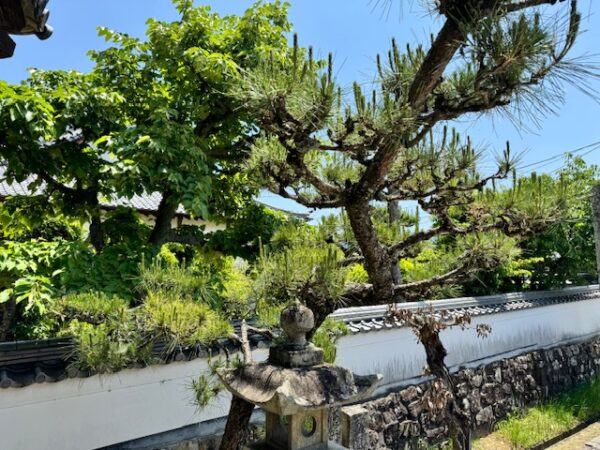
I met two ohenro friends from Switzerland and France on this stretch on the trail.
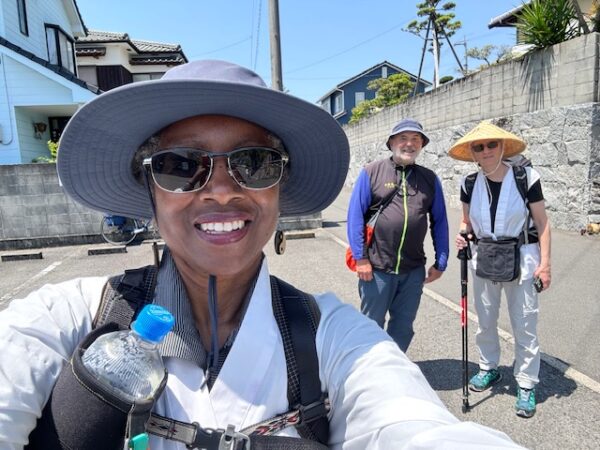
We met at the temple and walked together for a few more.
👣
50 Hanta-ji
The Temple of Great Prosperity
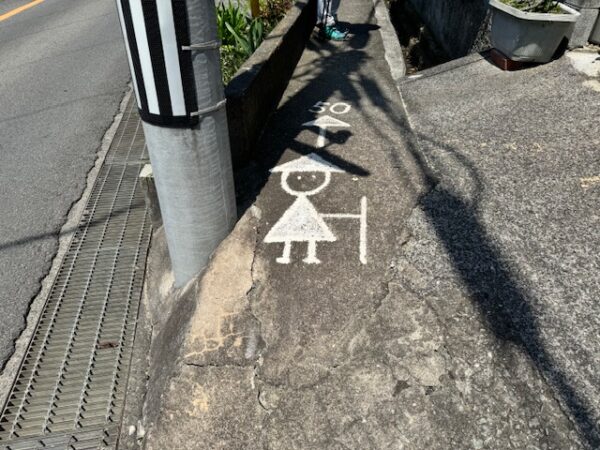
This kind woman presented me with osettai in a neighborhood cemetery on the path to temple 50.
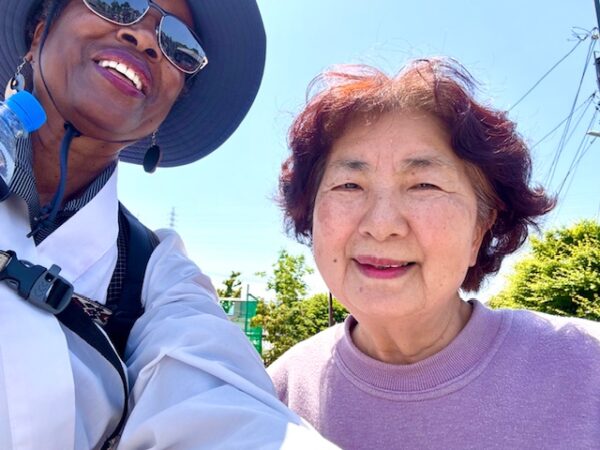
We talked for a moment before I resumed my walk to the temple grounds.
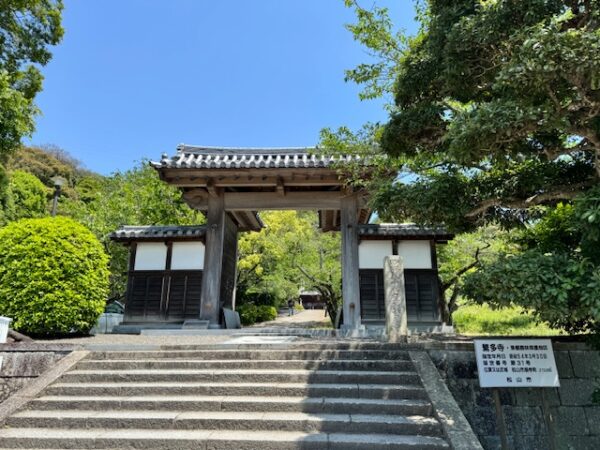
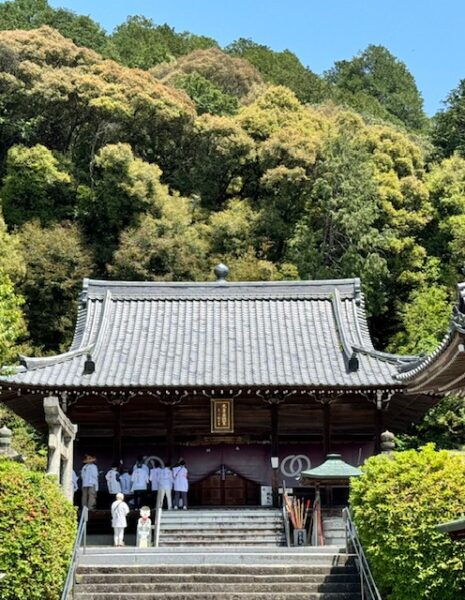
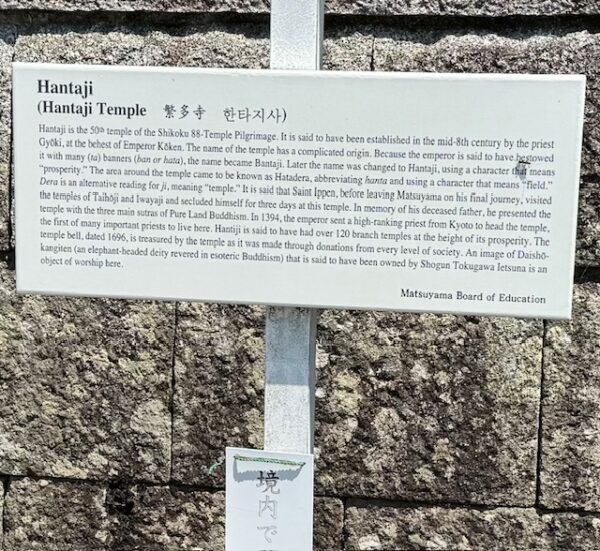
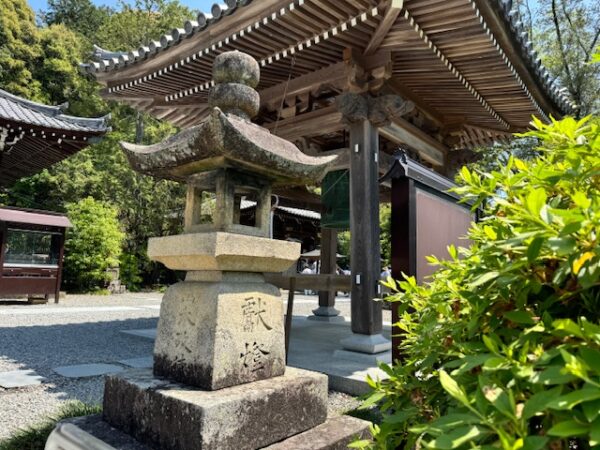
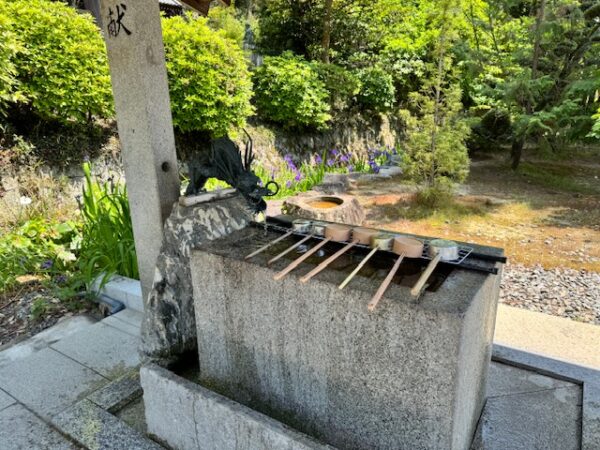
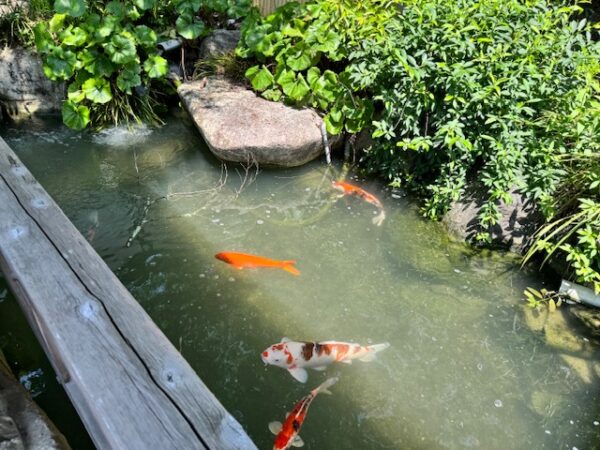
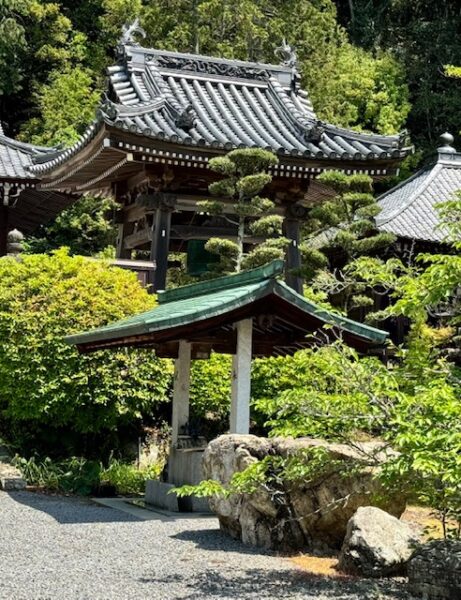
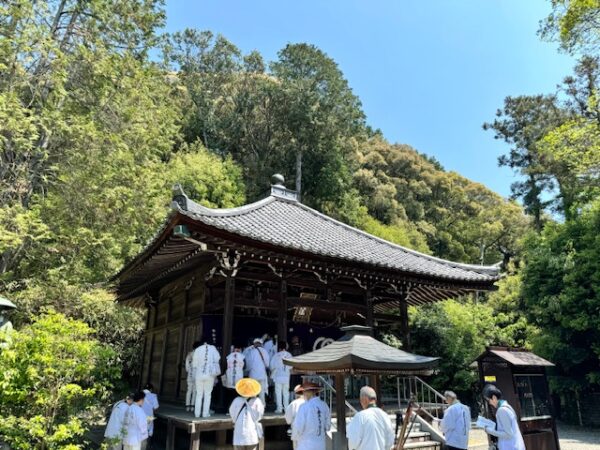
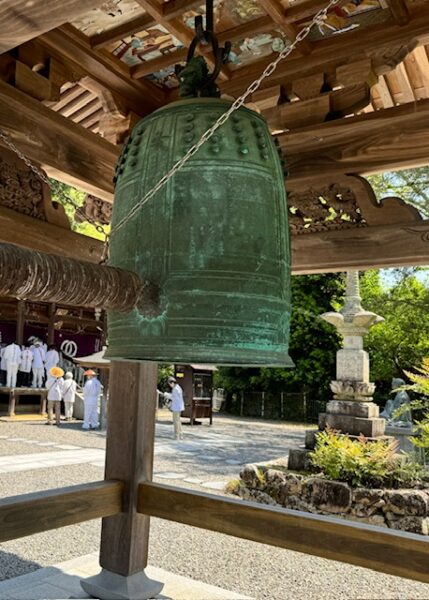
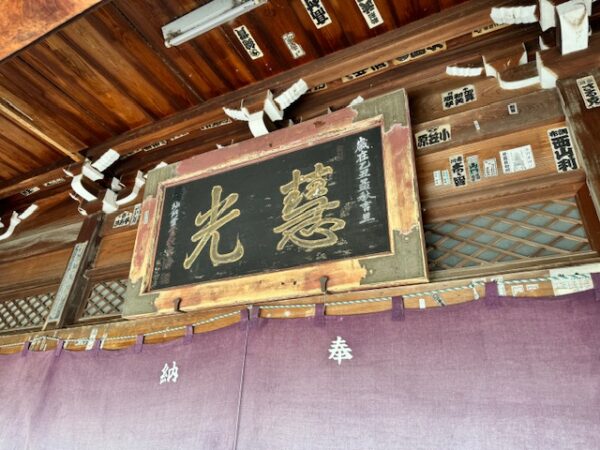
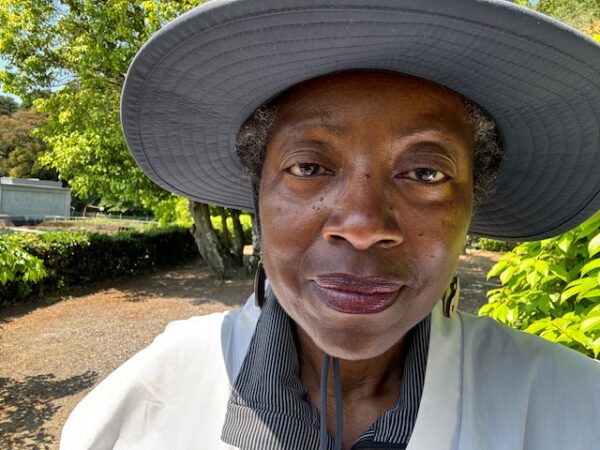
Days like this! I am hot, in need of water, and still in a good mood.
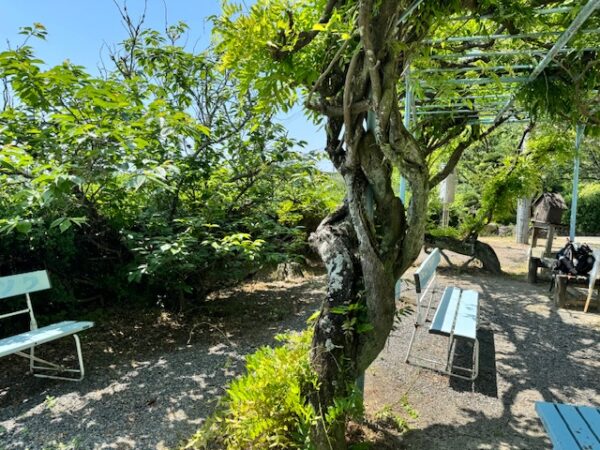
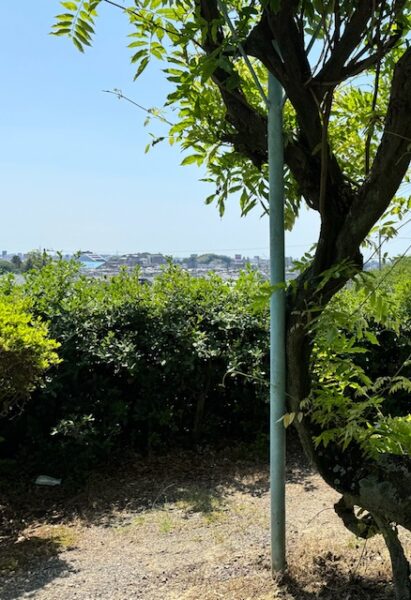
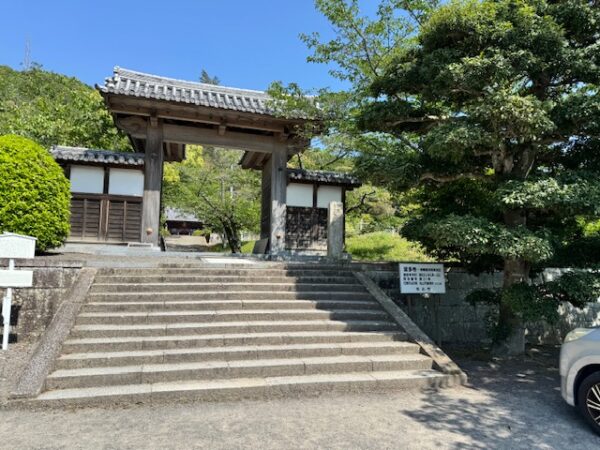
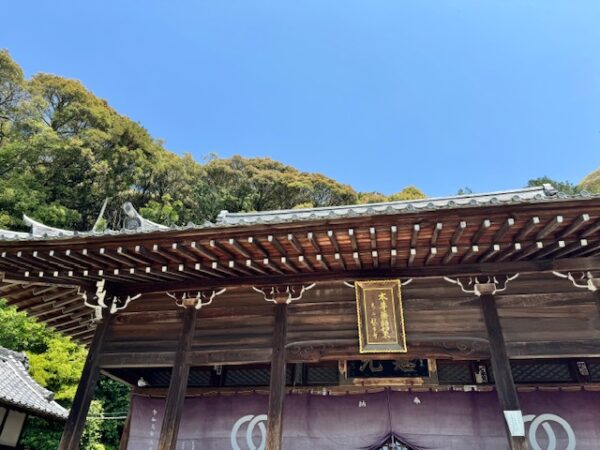
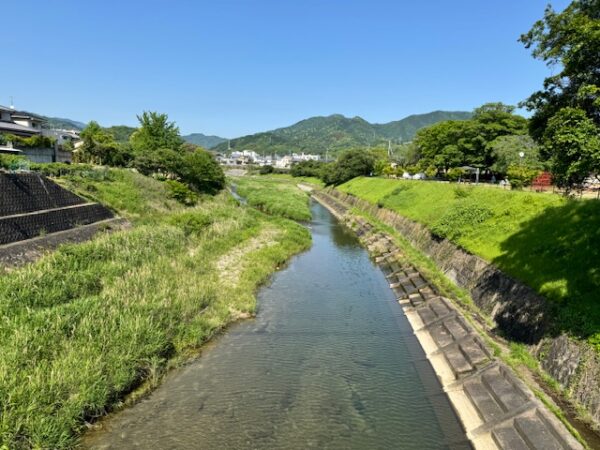
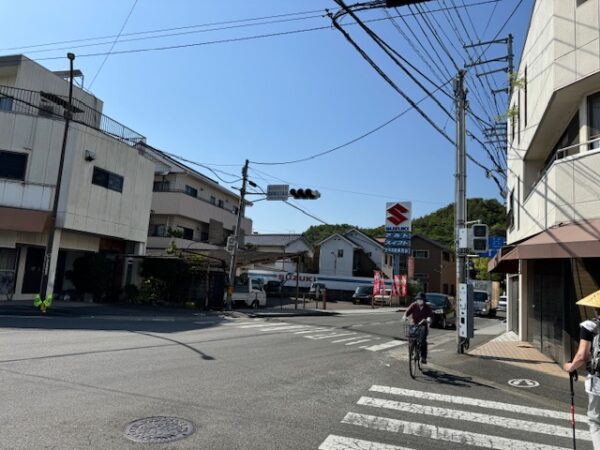
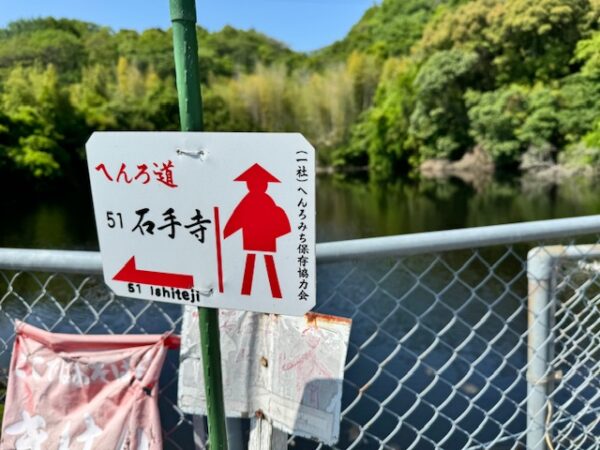
A marker is posted in a fence pointing toward temple 51.
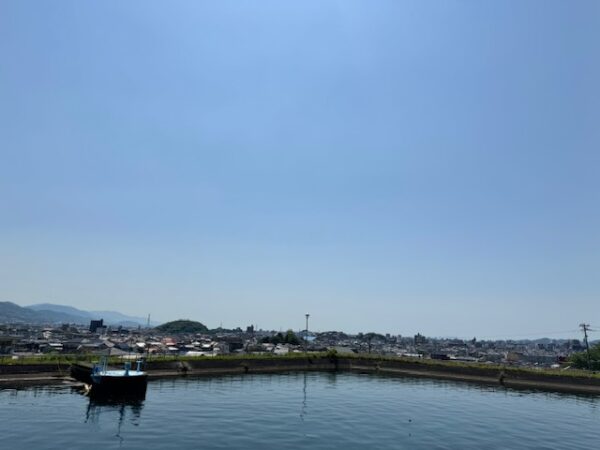
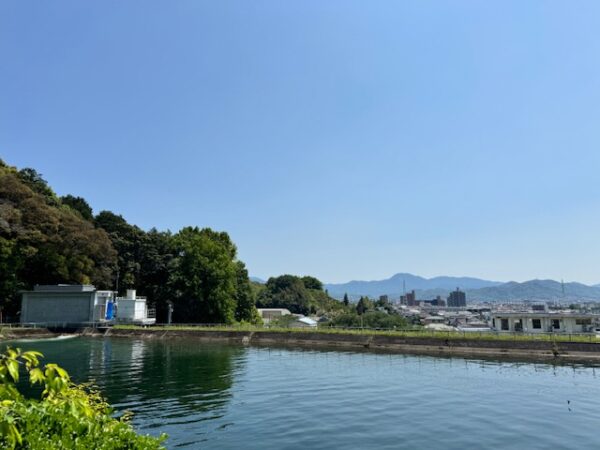
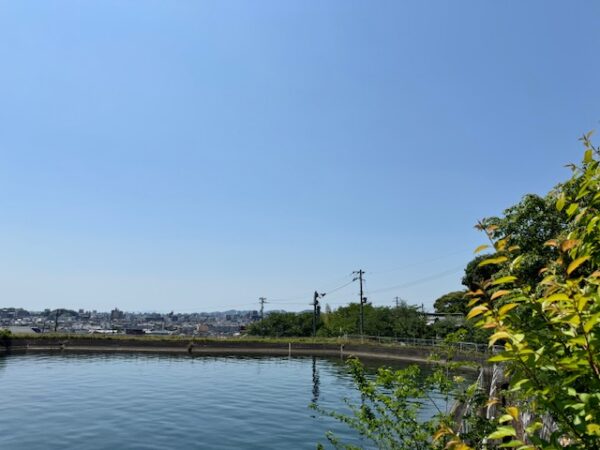
👣
51 Ishite-ji
The Temple of the Stone in the Hand
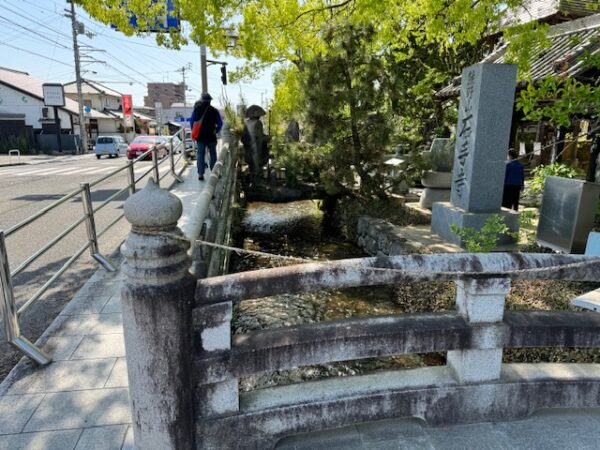
What you see is waraji
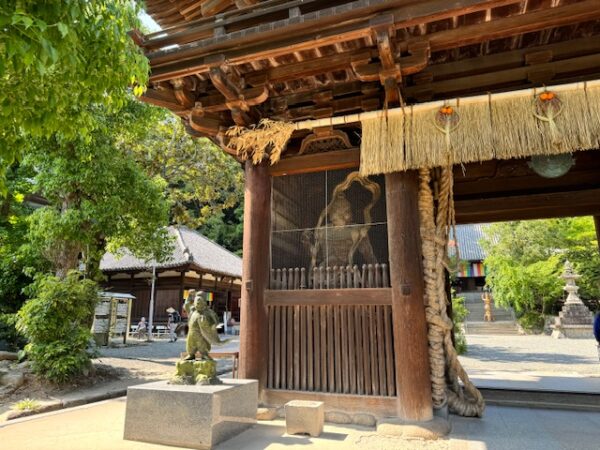
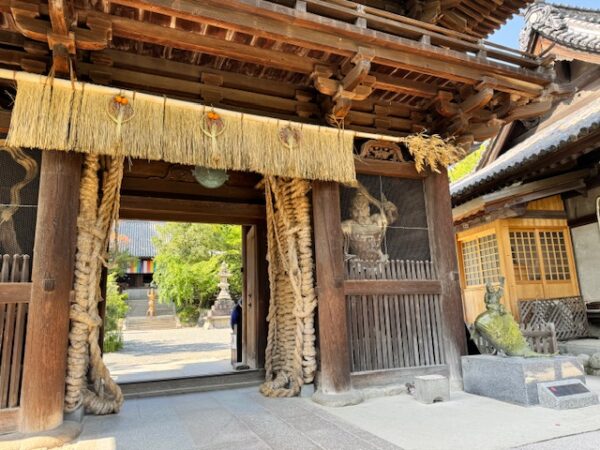
A huge pair of waraji flanks the temple gate.
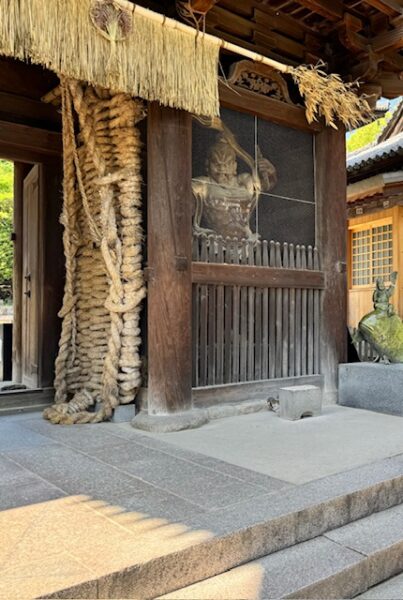
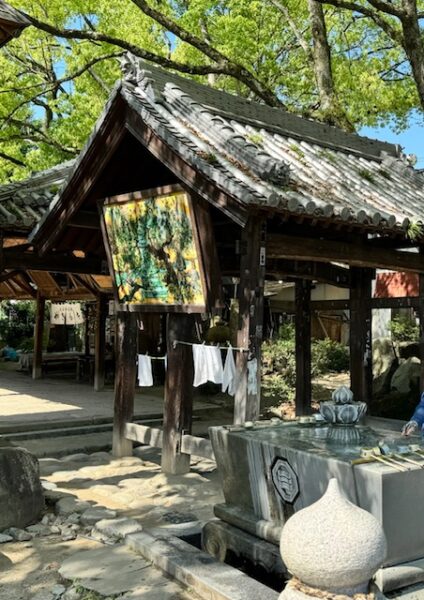
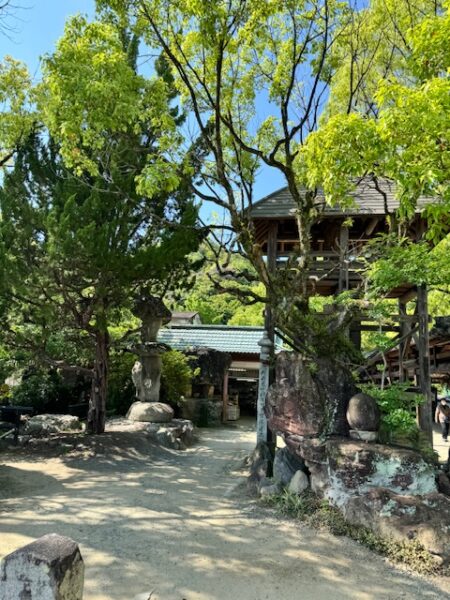
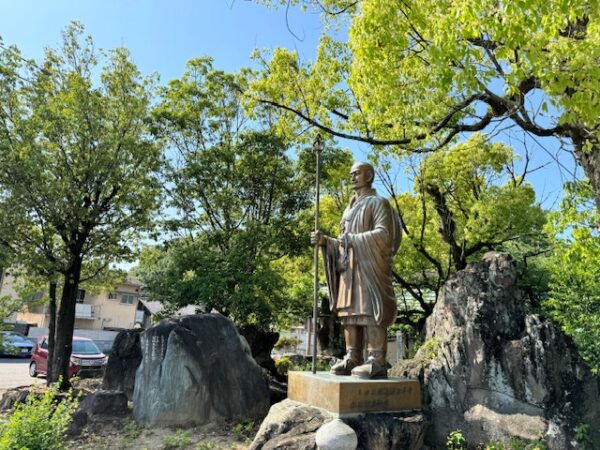
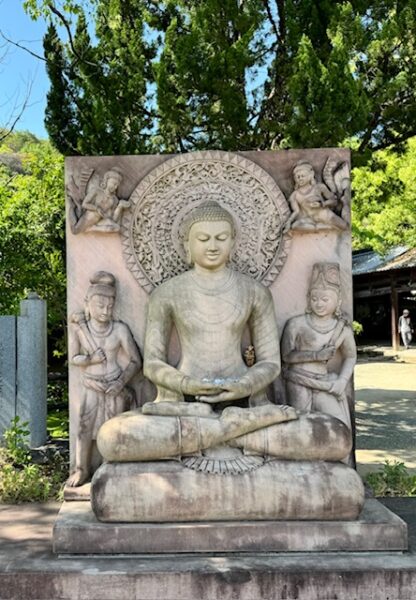
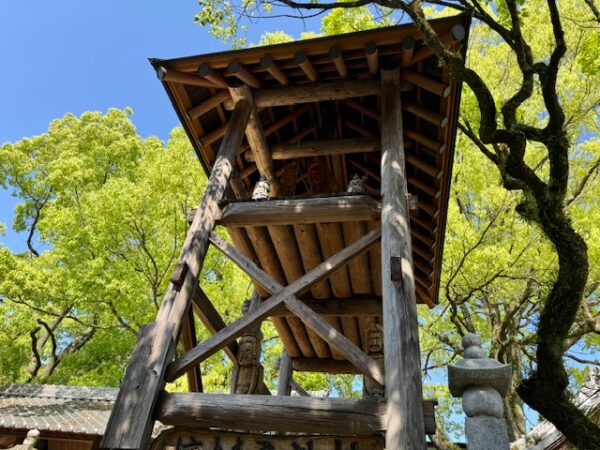
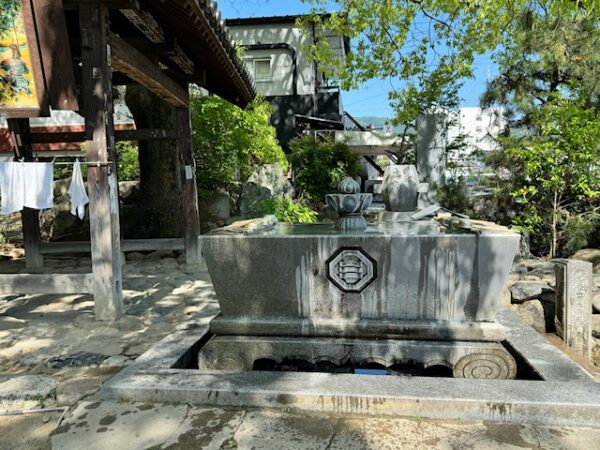
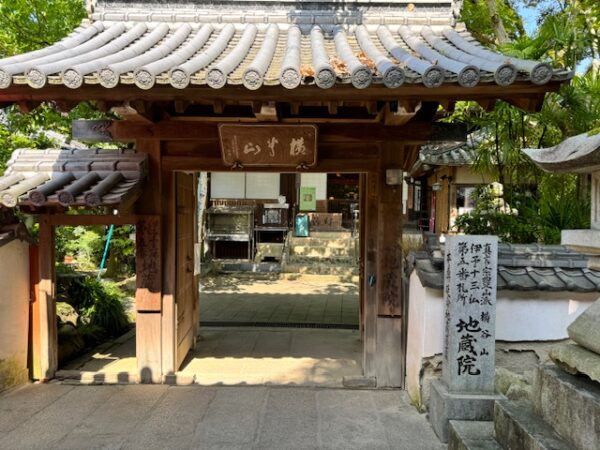
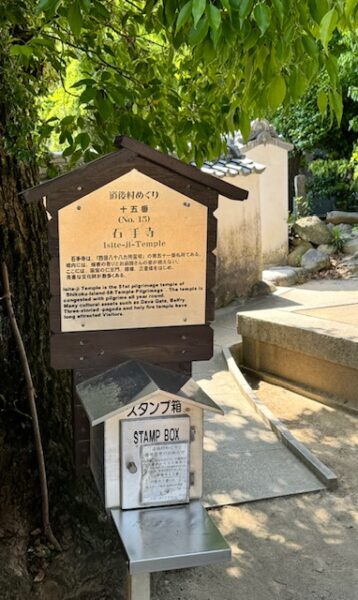
Giant waraji (‘o-waraji’) at the temple gate and the Niō guardians promise protection to all visitors who enter. They are hard to miss!
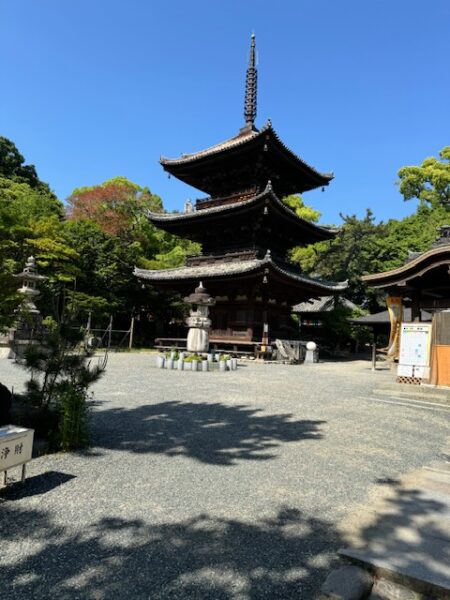
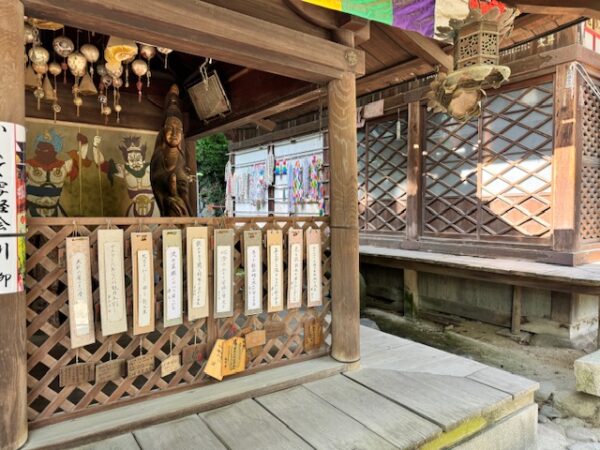
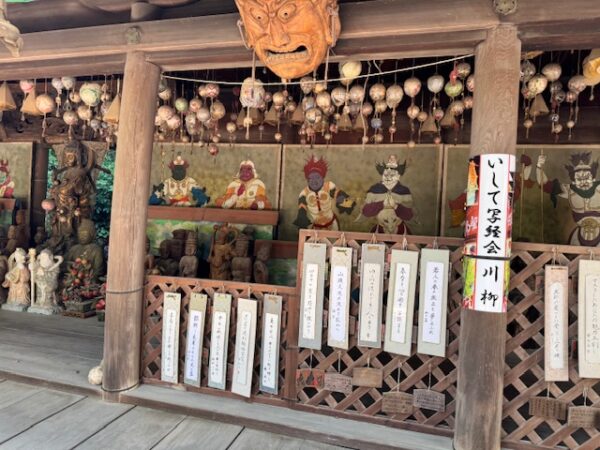
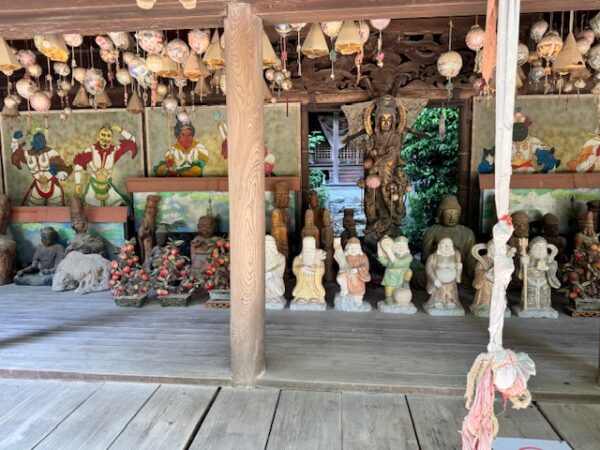
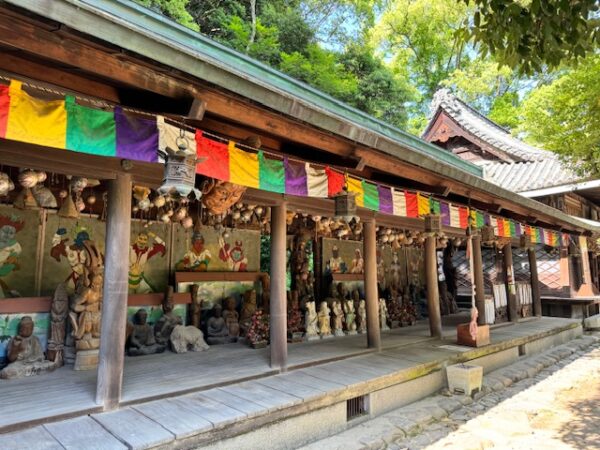
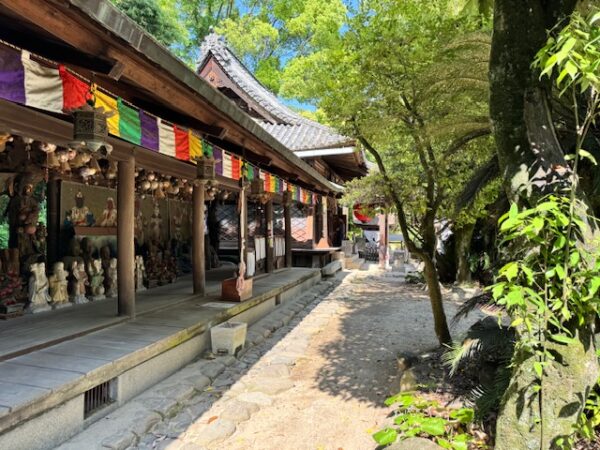
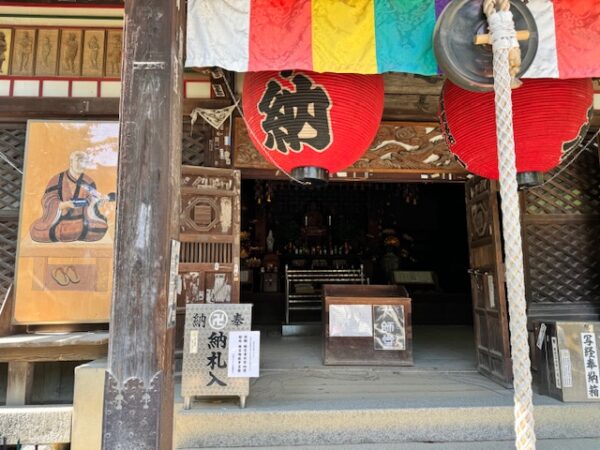
A vajra stands on the stone steps of the temple.
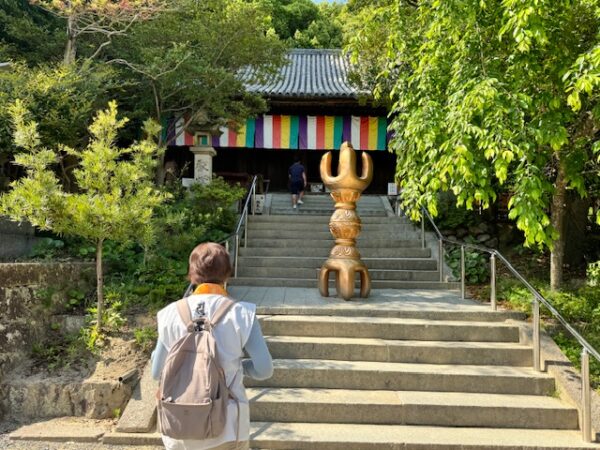
It is a three-pronged trident, a Buddhist artifact Kukai inherited from Ryumo Bosatsu, one of the elders of esoteric Buddhism.
On the trip home from China, he threw it in the direction of Japan. Where it landed was Koyasan, home of Shingon Buddhism.
This is the largest version so far that I have seen.
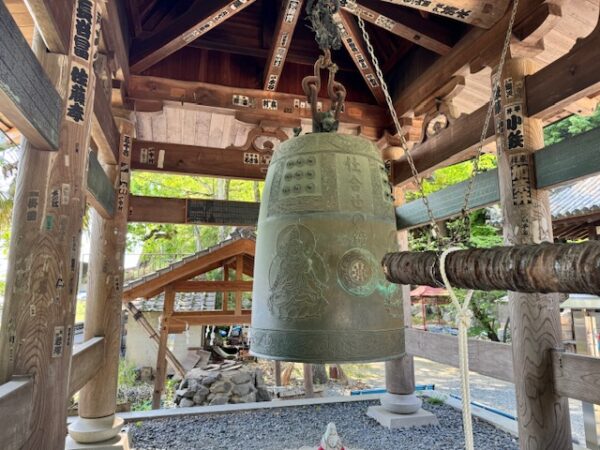
Ringing the bell announces your arrival at the temple.Thete is an art to it: only one ring is required. Be careful that a mindless effort makes the bell ring two times.
The first time I rang the bell, it made me feel conspicuous. I think that doubt about my own worthiness made me feel that way. Now I know it is normal and expected of each visitor or pilgrim.
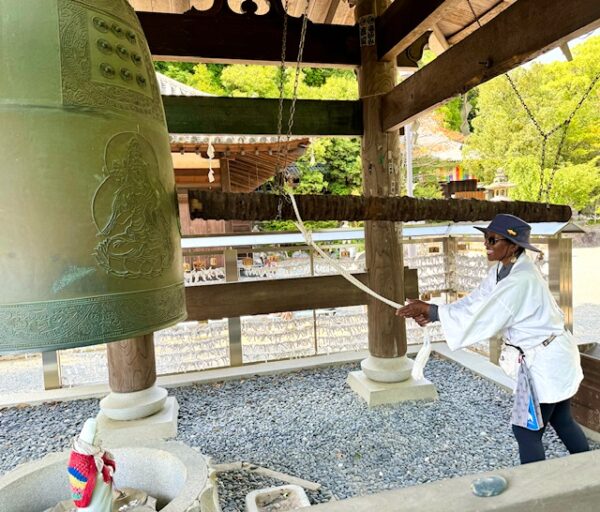
This building on temple grounds looked like a Christian church.
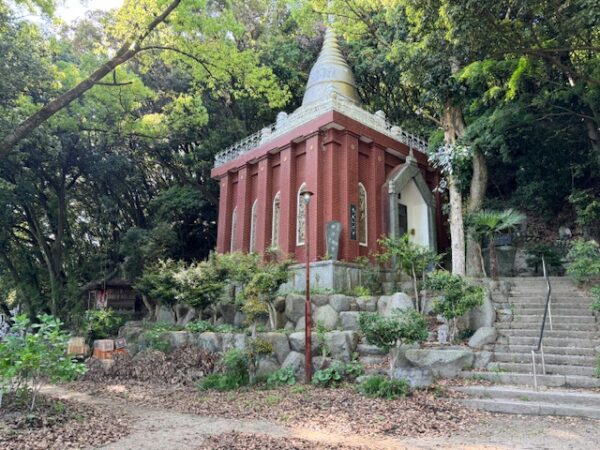
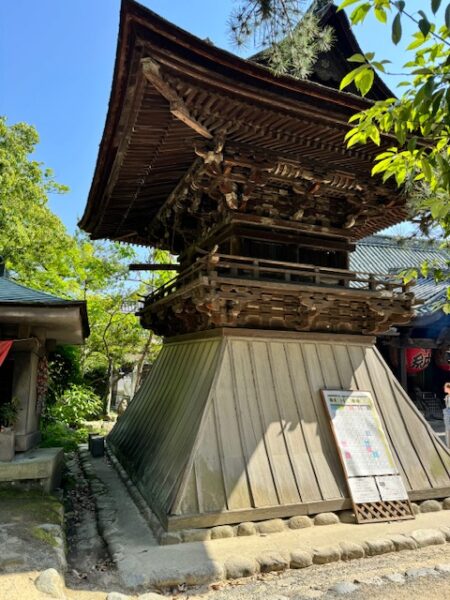
I think we were all excited about crossing the halfway mark on the pilgrimage. Somehow it feels like much of the worries about the holidays and long stretches in Kochi are truly behind us.
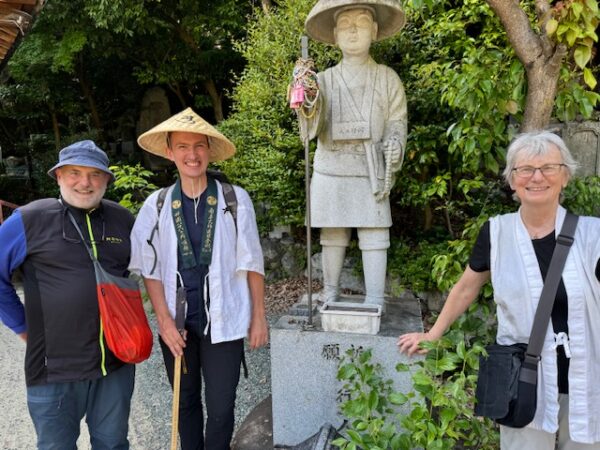
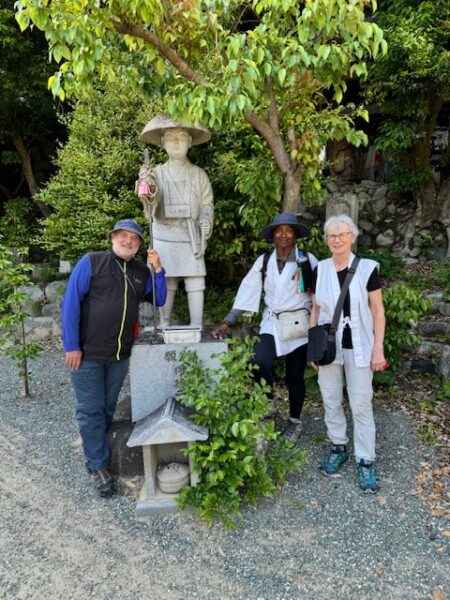
We are all smiles!
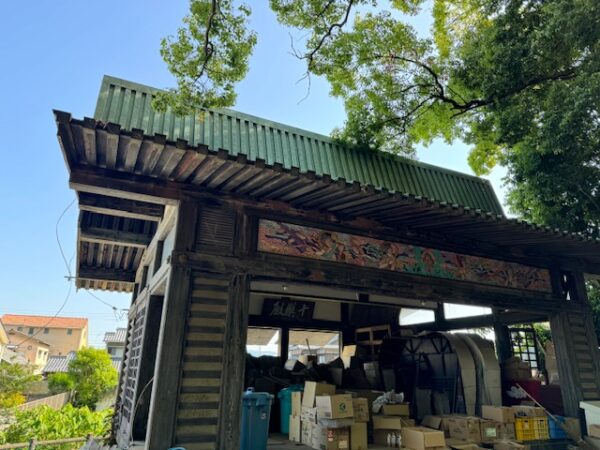
This building held building materials just like a barn or workshop!
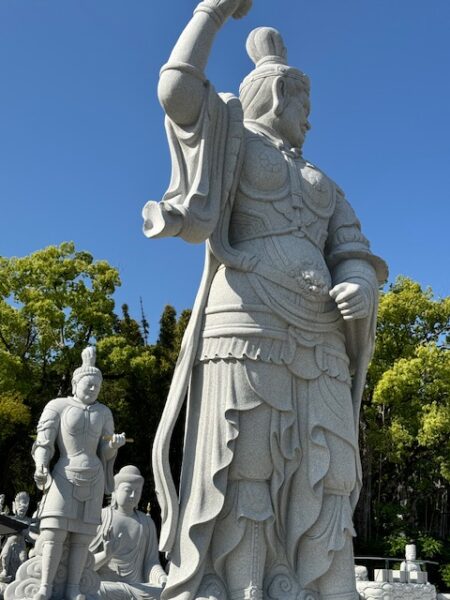
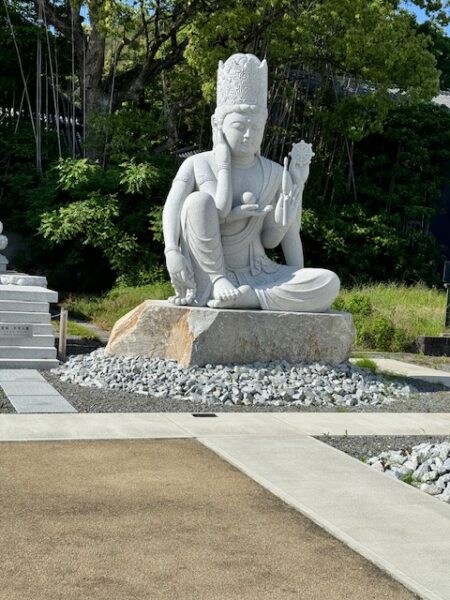
These impressive giant white stone sculptures stood outside the temple gates.
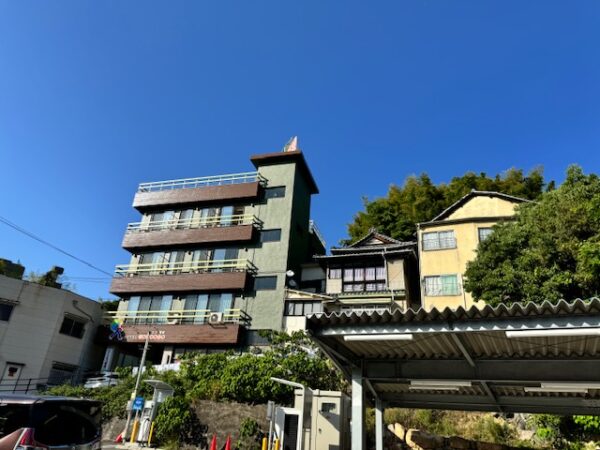
On to Matsuyama City!
Matsuyama is the largest city on Shikoku island.
See you next time.
Baadaye and Mata Ne (またね)
Shirley J 🌹
•
Here is a little history:
As you would expect, feet figure prominently in my pilgrimage stories. This is how it started:
Spain:
Praying With My Feet – Part 1, Part 2, and Part 3
Japan:
Noire Henro-san – Awakening
This and several posts this summer will chronicle my pilgrimage in Japan where I am walking the 1200 kilometer-long Shikoku 88 temple pilgrimage. Read my announcement here.
I am excited, and I am here, still walking. And just know this, I will return to tell the tale!

T49-51
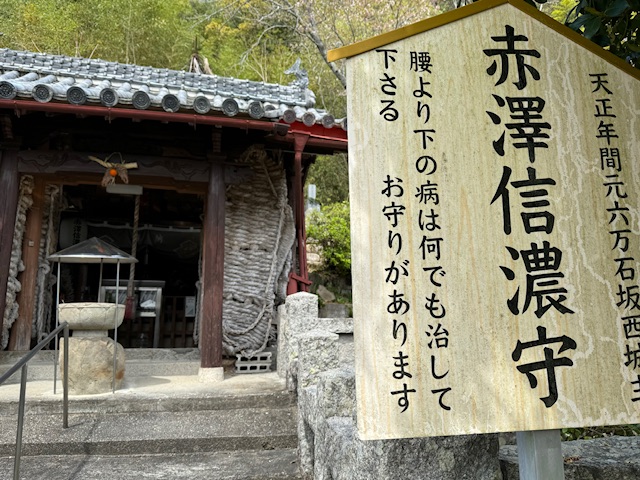
2 thoughts on “🌸 Noire Henro-san: Praying With My Feet – Pt 4”
Beautiful surroundings at most of the temples. Thanks for continuing to show us your journey!
Thanks for (still) reading! 🌸
Comments are closed.